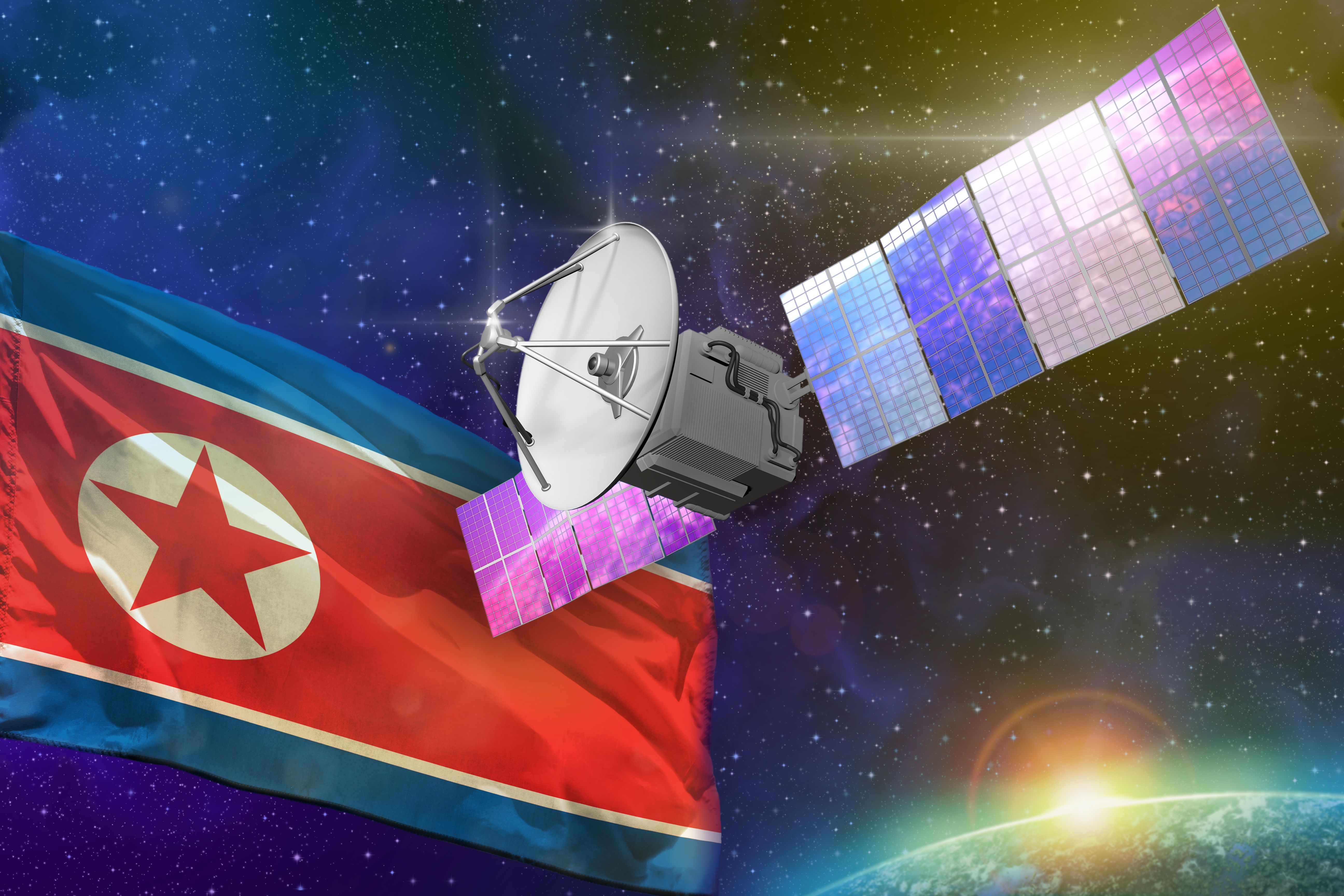
North Korea’s Space Development: The Gap Between Ideal and Reality
Commentary | May 22, 2023
Cheol-wun Jang
Research Fellow of Korea Institute for National Unification
Cheol-wun Jang, a research fellow at the Korea Institute for National Unification, emphasizes that while North Korea has made significant strides in long-range ballistic missiles, it has not been successful in the area of artificial satellites. Up until now, Pyongyang has had limited engagement in exchanges with major advanced countries involved in space development. Dr. Jang predicts that North Korea is expected to continue its independent pursuit of space development, which will hinder the country’s progress in the satellite sector in the near future.
In the Kim Jong Un era, North Korea appears to be accelerating so-called “space development,” particularly in “space militarization.” At the 8th Congress of the Korean Workers’ Party held in January 2021, Chairman Kim Jong Un declared that the military reconnaissance satellite No. 1 had already been built and ordered officials to speed up preparations for its launch. He emphasized the importance of launching several satellites to establish an intelligence-gathering capability. On March 9, 2022, Chairman Kim provided on-site guidance to the National Aerospace Development Administration(NADA), issuing orders for the launch of a significant number of military reconnaissance satellites as part of the “Five-Year Plan for Weapon Systems and Defense Science Development” presented at the 8th Congress of the Korean Workers’ Party. The following day, he visited the Sohae Satellite Launching Site and directed the expansion and modernization of the facility to enable the launch of multi-purpose satellites, including military reconnaissance satellites.
On December 18, 2022, the NADA of North Korea conducted an “important test in the final stage for the development of a reconnaissance satellite” at the Sohae Satellite Launching Ground, where it announced that North Korea would finish the preparations for the first military reconnaissance satellite by April 2023. Then, on April 18, 2023, Chairman Kim Jong Un, accompanied by his daughter, visited the NADA once again and instructed officials to prepare for the planned launch of its first military spy satellite as planned. Considering these recent developments, this article will examine North Korea’s space development, focusing on the disparity between their ideals and actual progress made.
North Korea’s Space Development Goals
According to North Korea’s assertions, the first launch of an artificial satellite took place on August 31, 1998. The North Korean government proclaimed that they had successfully launched the long-range rocket named Baekdusan-1, which carried an artificial satellite known as Kwangmyongsong-1. However, external entities, including South Korea and the United States, regarded the Baekdusan-1 long-range rocket as the Taepodong-1 long-range ballistic missile. Including this, by February 2016, North Korea had conducted six long-range rocket launches under the pretext of satellite launches. Nonetheless, observers outside North Korea, such as South Korea and the United States, largely perceived these launches as long-range ballistic missile tests.
As previously mentioned, North Korea has visibly been promoting the launch of military reconnaissance satellites since the 8th Congress of the Korean Workers’ Party. Due to this historical context, it is generally evaluated outside North Korea that the country is focused on promoting space development with a military emphasis, overlooking other fundamental objectives pursued through space development. However, the basic goal of North Korea’s space development includes economic as well as military aspects. This oversight is a result of the dual-use nature of the scientific and technological components required for space development, applicable in both military and economic capacities. Therefore, the primary goals of North Korea’s space development do not appear to differ significantly from those of other nations.
The primary goals of space development pursued by North Korea, particularly under the leadership of Kim Jong Un, were reaffirmed during Chairman Kim’s visit to the NADA on April 18, 2023. During the visit, he emphasized the significance of space development in relation to economic and security aspects and issued instructions to advance science and technology in this domain. Furthermore, Chairman Kim stressed the need for independent possession and operation of weather observation satellites, Earth observation satellites, and communication satellites to promote economic development, in addition to military reconnaissance satellites for security purposes. In alignment with these objectives, Kim Jong Un also issued directives for the construction of carrier rockets capable of deploying various satellites into desired orbits and the establishment of a suitable launch pad for these rockets.
The Reality of North Korea’s Space Development and the Possibility of Space Militarization
The reason why external actors have primarily evaluated North Korea’s space development goals in terms of their military aspect is due to the observed behavior exhibited by North Korea under the pretext of space development. It is crucial to acknowledge that space development requires scientific and technological capabilities in various fields. Among these capabilities, the ones related to launch vehicles and artificial satellites are considered the core aspects. While North Korea has achieved significant results regarding launch vehicles, which bear striking technical similarities to long-range ballistic missiles, the overall assessment suggests that it has not yet achieved satisfactory results in the field of artificial satellites.
A comprehensive evaluation of North Korea’s accomplishments in the artificial satellite sector reveals that out of the six satellite launch attempts made by North Korea thus far, four have failed to reach orbit successfully. Even the two satellites considered to have somewhat entered orbit are believed to have encountered functionality issues. Notably, the “important test for reconnaissance satellite development,” conducted by North Korea’s NADA and the National Defense Academy on February 27 and March 5, 2022, appeared to involve testing devices such as shooting mechanisms intended for installation on military reconnaissance satellites. However, the images released by North Korea immediately following the test raised doubts about whether these devices could effectively serve as appropriate military reconnaissance satellites.
On the other hand, North Korea has made significant progress in the field of projectiles. Initially, there were four failed attempts, with two rockets exploding shortly after launch and two failing to complete the three-stage separation. However, these incidents occurred before December 2012. Subsequently, North Korea achieved successful launches, including the second rocket of the Unha-3 on December 12, 2012, and the Kwangmyongsong-4 rocket on February 7, 2016. The Kim Jong Un regime even advocated the “Byungjin route for economic construction and nuclear force construction” as its national strategic approach between 2013 and 2017. Starting from February 2019, there has been a renewed emphasis on advancing nuclear and missile capabilities, resulting in successful test launches of various types of long-range ballistic missiles that are considered to be superior in performance compared to the Kwangmyongsong rocket.
Until now, North Korea has had limited engagement in exchanges or cooperation with major advanced countries involved in space development. Given the sensitivity of science and technology related to space development, it appears unlikely that North Korea will pursue future exchanges and cooperation with major advanced countries in this domain. If North Korea continues to independently pursue space development as it has done so far, achieving tangible results in the satellite sector within a short period will be challenging. Major advanced countries engaged in space development are currently accelerating preparations for what is known as “space warfare,” which goes beyond the operation of military reconnaissance satellites and involves the weaponization of artificial satellites and spacecraft-based attacks. Considering this context, it presents a significant challenge for North Korea to realize space militarization or reach the level of major advanced countries in space development within a short period.
■ Cheol-wun Jang is a Research Fellow of KINU. Dr. JANG is studing about the Two-Korea’s Relationship and Korean Peninsula’s security issues included the nuclear and missile issues of North Korea. He worked to Ministry of Unification, Yonhap News Agency, and IFES(Institute for Far Eastern Studies) of Kyungnam University. Dr. Cheol-wun JANG graduated from the Department of Nuclear Engineering at Hanyang University in 2004. Dr. Jang received a master’s degree in North Korean Studies in 2006 at Kyungnam University’s Graduated School of North Korean Studies with a thesis titled “A Comparative Study on Nuclear Policies of the Two Koreas.” In 2014, he received a doctorate at University of North Korean Studies with the thesis titled “Arms race of the Two Koreas in Surface-to-Surface Missiles: Determinants and Capabilities.”
■ Typeset by Junghoo Park, Research Associate;Yu Na Choi, Intern; Jian Shin, Intern
For inquiries: 02 2277 1683 (ext. 205) | jhpark@eai.or.kr
Security and External Relations

The South Korea-U.S. Summit and Measures to Enhance Bilateral Cooperation on North Korea
Jechun Kim | 03.May.2023
![[Global NK Commentary Series] North Korea's New Cold War Narrative](/upload/commentary/09da1c044f9a88a2604108134098179c.png)
[Global NK Commentary Series] North Korea's New Cold War Narrative
Won Gon Park, Dong Ryul Lee, Hyun-wook Kim, Seho Jang, Seunghee Oh, Jihwan Hwang | 06.April.2023

Pyongyang in Search of a New Cold War Strategy
Jihwan Hwang | 05.April.2023
LIST